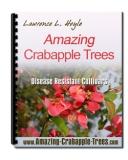How to Filter Your Water Feature
Do you keep a water feature at home or at your garden? You might be constantly bothered that it could frequently get blocked by debris, soil, sand, or sediments that may accumulate over time. When the intake and outtake openings are blocked, you may notice that water may not run properly. In many cases, the pump might also get affected. Worse, if the problem is not solved effectively and immediately, it may lead to a myriad of more problems, which may include the whole setup being completely dysfunctional.
How could you filter a water feature? In general, every water feature may include in its component a filter to help prevent blockage of necessary openings and passage of water. Unfortunately, even filters get dysfunctional at times because there are very small debris that could even pass through them. When such substances pass through filters, they may immediately proceed to other parts or components. Water supply and quality in the setup could be disrupted.
Some users simply put out filter because the component could at times just lead to problems. This is especially true in cases wherein soil, mineral, and sediment accumulation ensues. Instead of just going somewhere in the system, the filter tend to trap such materials and in time accumulate to cause blockage.
How could you possibly make the filter more functional? How could you filter your water feature? The answer is simple: just keep the filter where it is and let it perform its role. It would be ideal if you would regularly check out the status not just of the filter but of the entire system so you could make sure the setup is always in good condition. As you see, the water feature should be immediately cleared of any problem to help prevent drying out. If that happens, the system may be of greater risk of losing water supplies or totally drying out, an occurrence that could incur permanent damage to the entire water feature system.
External debris
Try to take out all external debris. Such materials could block intake openings, even if there are screens or filters, which could help extend pump life through making water move along easier. They could possibly clog up. Always inspect the filter and the screen so you could instantly remove possible debris. Watch the water flow. Changes should make you turn off the water pump so you could instantly inspect for any presence of unwanted foreign objects.
Remove the impeller at once to clean it if you observe that it has gotten itself very much encrusted with much minerals as well as sediments. It would also help if you would soak the impeller into a 50-50 solvent solution like the CLR, which is available commercially in hardware retailers. Soak the impeller in such a solution for about 20 minutes. Remember that water fountains that are using clean or tap water are more likely to suffer from frequent mineral deposits and clogging. Fountains that use dirty water could often get clogged with unnecessary sediment.
Other insights
The impeller could also get full of debris. After dislodging debris, it may still need some nudges so that it could get going again. Prior to disassembling impeller, take pictures of the pump as you disassemble. This is because you may logically forget how to re-assemble it. If there is a manual for assembling and disassembling, it would be better. After reassembling the setup, make sure all hoses are snugly and firmly attached. Dislodge debris through running the water backwards (an alternative) into the pump.
Assign spillway where water would run and come to an area designated for pumping so that the water cycle could be completed. Of course, on initial operation, put more than enough water. Do not let the set up dry out or lose a significant amount of water. Keep on inspecting the setup regularly. The pump, impeller, and screens could be constantly filled with debris, sand, or small rocks. Put out those impediments through continuous flow or pumping of water. You may also put out water plants, moss, and algae as they would eventually affect the overall performance of specific water feature components.
Have A Great Story About This Topic?
Do you have a great story about this? Share it!
Order Your New Landscape Design Today!
Always Design Before You Plant!
Click The Above Link To Get Your Dream Design Started Now!

Privacy Disclaimer About Contact This Site Built: Solo Build It
Copyright © 2003 - 2023 by Web-Landscape-Design-Ideas.com.
All rights reserved.


